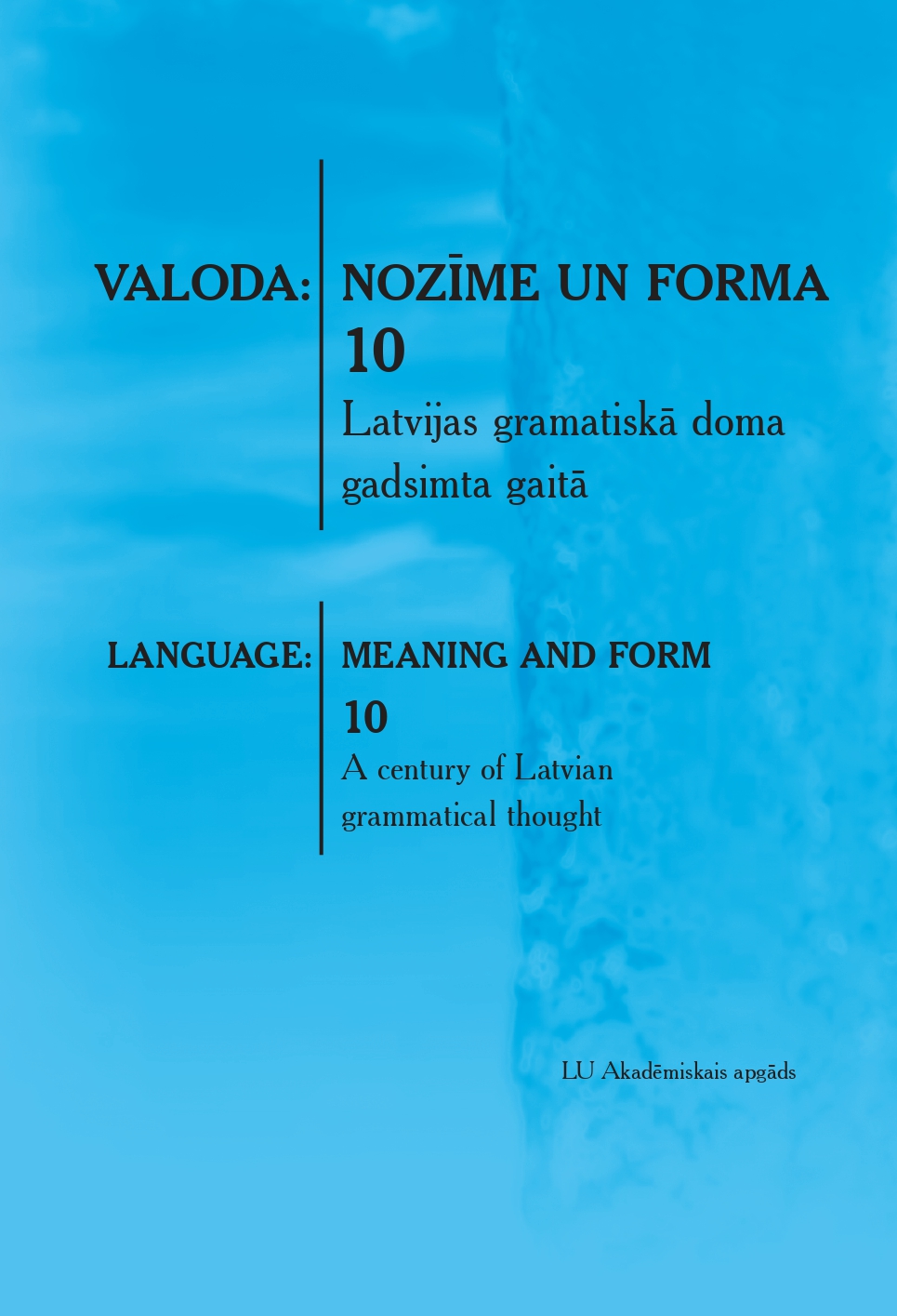Pakārtojuma vārdu ka un kad lietojums mutvārdu tekstā
The use of conjunctive words ka ‘that’ and kad ‘when’ in the spoken text
Author(s): Linda LauzeSubject(s): Morphology, Syntax, Lexis, Baltic Languages
Published by: Latvijas Universitātes Akadēmiskais apgāds
Keywords: language planning; syntax; spoken text; conjunction ka; adverbial modifier kad;
Summary/Abstract: The present article deals with the use of conjunctive words ka ‘that’ and kad ‘when’ in the spoken text. Up to now there are some actual issues related to choosing the correct conjunctive word. It is a widespread mistake to use an adverb kad instead conjunction ka when implementing the structure of the complex sentence especially in spoken text. The fixed material was recorded from television and radio broadcasts and different speech situations in everyday communication. The research has been focused on semantics and types of subordinate clauses from the point of view of syntax of the Latvian language. It is necessary to pay more attention to those types of complex sentence to use both conjunctive words (see Table 1). Object clause belongs to above-mentioned types. It is stated that in definite cases only the use of the conjunction ka is highly recommended. It is connected not only with semantics of the subordinate clause but also with valency of the verb being in the center of the main clause.
Journal: Valoda: nozīme un forma
- Issue Year: 2019
- Issue No: 10
- Page Range: 105-113
- Page Count: 9
- Language: Latvian

